Travelling to Russia is a remarkable experience, given its vast expanse and the allure of cities like Moscow and St. Petersburg. To embark on this journey, understanding the visa process is crucial. For tourists, obtaining a Russian tourist visa is a necessity, granting a maximum stay of one month, equivalent to 30 days. This visa is your ticket to exploring Russia.
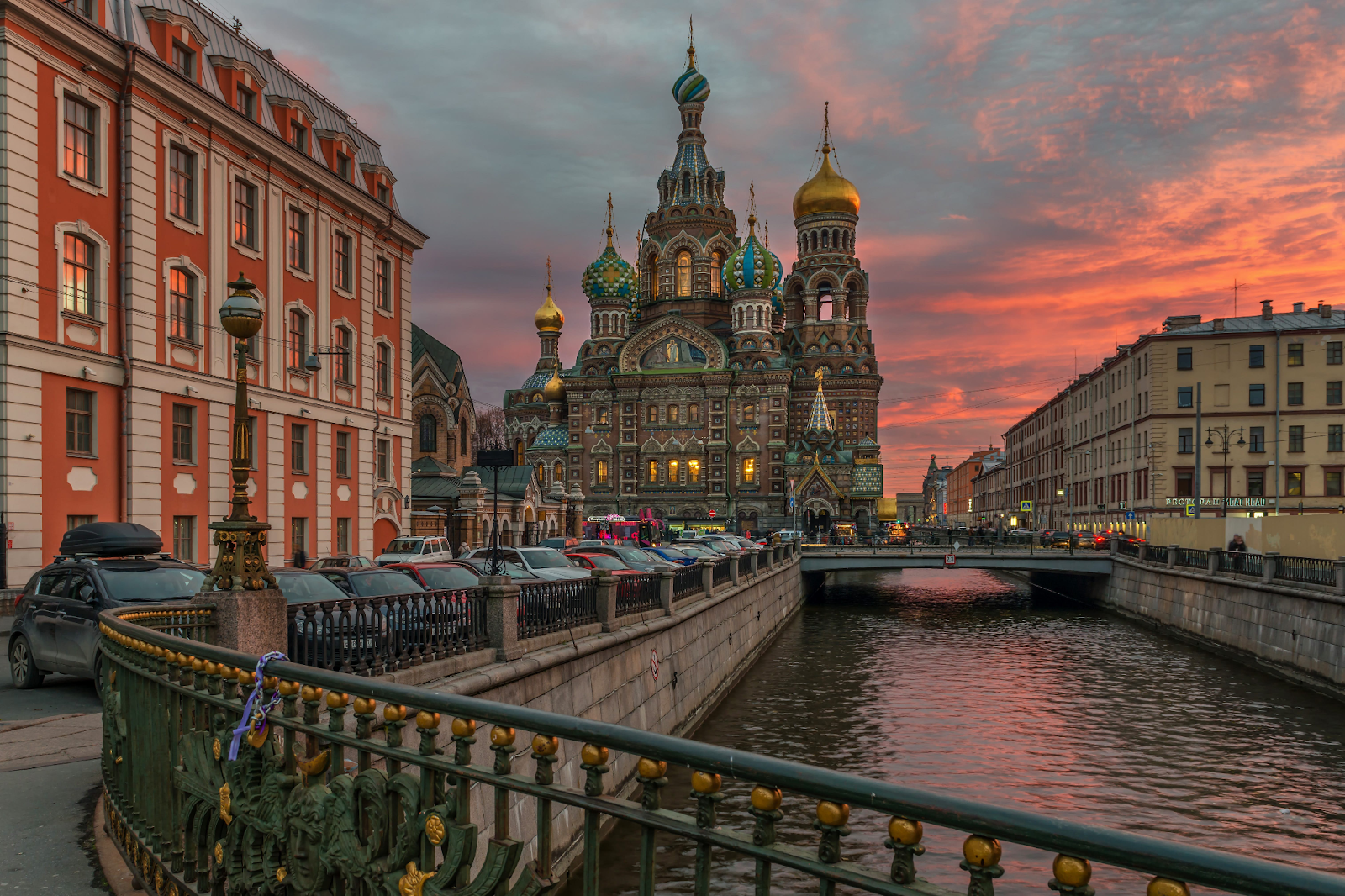
Travelling to Russia is a remarkable experience, given its vast expanse and the allure of cities like Moscow and St. Petersburg. To embark on this journey, understanding the visa process is crucial. For tourists, obtaining a Russian tourist visa is a necessity, granting a maximum stay of one month, equivalent to 30 days. This visa is your ticket to exploring Russia.
Lonely planet-Russia
Typically, travellers must acquire a short-term visa for their Russian sojourn. This visa permits various activities such as tourism, attending brief job interviews, participating in conferences, or seeking medical treatment, as long as your stay does not surpass 30 days.
The processing time for a short-term Russian visa generally ranges from 10 to 20 days, though this can vary depending on your country of application. The cost of securing a tourist visa to Russia typically falls between 30 to 300 euros, varying based on your citizenship.
To journey to Russia, you must assemble the necessary documents for your visa application, including:
Russian cuisine is steeped in rich history and offers a unique culinary experience. Whether you're visiting Moscow for leisure or business, exploring Russian food is a must. Russian culinary traditions have evolved over time, influenced by various social, geographical, economic, and historical factors. While it's often perceived as heavy and greasy, Russian cuisine is a delightful surprise for those willing to explore it.
If you're planning a trip to Russia, discovering the local gastronomy is a must. Researching the foods favoured by the locals and understanding what food is commonly eaten in Russia will enhance your culinary adventure. In this article, we'll delve into the most popular foods in Russia, providing you with insights into the top 10 dishes you should savour during your visit.

Blinis are not just a culinary delight; they are a cultural cornerstone in Russian cuisine. These delicate pancakes are a source of both comfort and celebration for Russians, making them an integral part of their culinary heritage.
Blinis are renowned for their thin and tender texture. The art of achieving the perfect thinness while maintaining a soft and pliable structure is a skill that has been passed down through generations. This unique texture allows blinis to serve as a canvas for a wide range of culinary creations.
They can effortlessly transition from a sweet dessert to a hearty savoury main course, depending on the toppings and fillings used. This adaptability makes them suitable for any meal of the day. Whether adorned with sweet delights like honey, cream, or jam for a morning treat or paired with savoury ingredients like smoked salmon, caviar, or sour cream for a satisfying dinner, blinis can cater to a wide array of tastes.
Beyond their culinary appeal, blinis hold cultural significance. They are often associated with festive occasions, particularly during Maslenitsa, a traditional Russian holiday celebrating the end of winter. During this time, blinis take centre stage as a symbol of the sun and the promise of warmer days ahead.
The subtle sweetness of honey, the indulgent richness of cream, or the burst of fruity freshness from jam can all be elevated when paired with blinis. Likewise, when used as a base for savoury toppings, blinis provide a soft and neutral backdrop that allows the ingredients to shine.
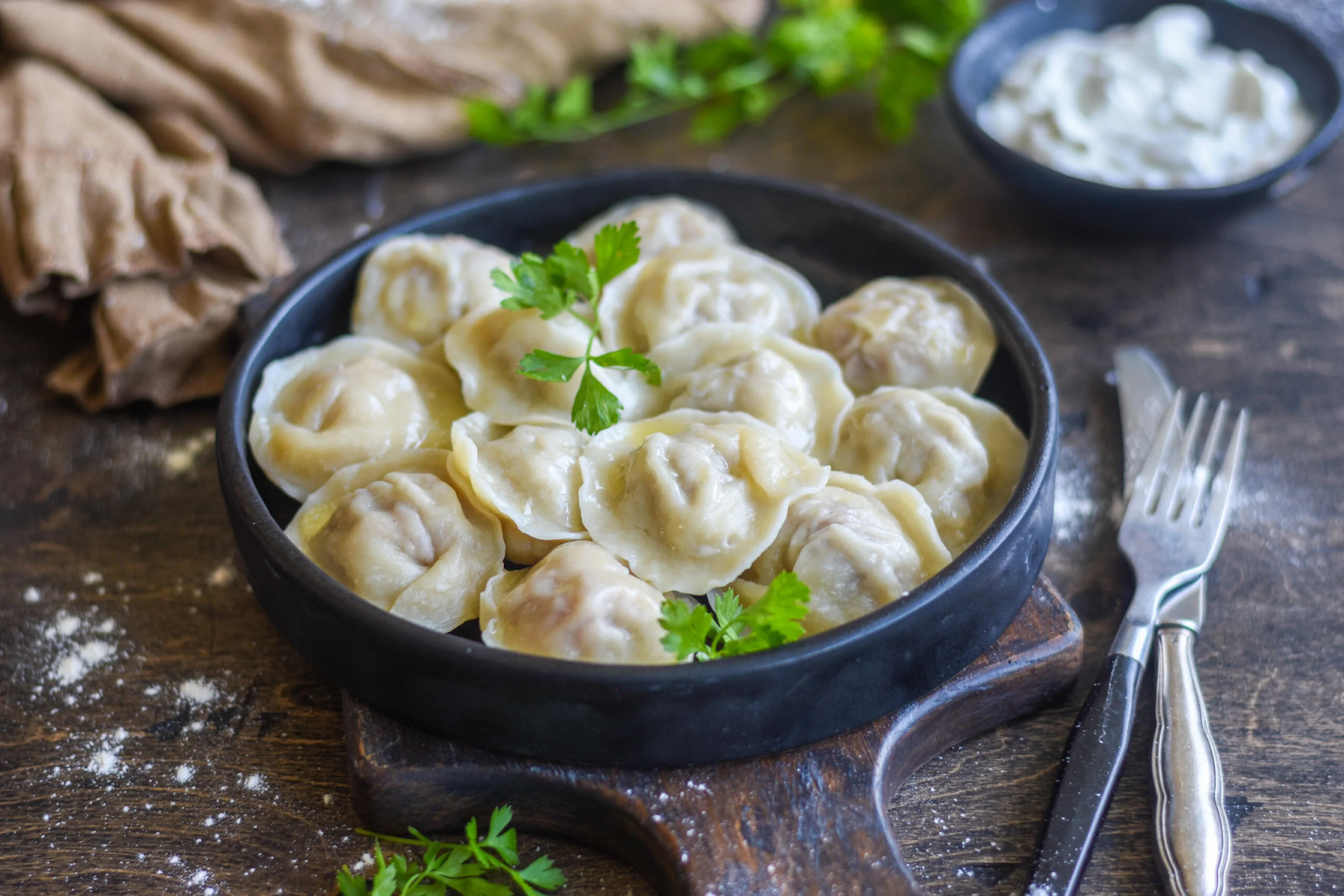
Pelmeni, deeply rooted in the culinary heritage of Russia, boasts a history as intriguing as its name. The etymology of "pelmeni" takes us on a linguistic journey, originating from the word "pelnyan," which intriguingly translates to "ear bread." This nomenclature carries with it the echoes of time, revealing the dish's rich historical roots, particularly in regions like Perm and Udmurtia.
These delectable dumplings serve as blank canvases for a wide range of fillings. Whether filled with succulent pork, fragrant lamb, hearty beef, or even the flavorful essence of fish, pelmeni showcases the depth and diversity of Russian culinary tradition. This adaptability not only caters to different palates but also reflects the resourcefulness of Russian cuisine in utilising locally available ingredients.
Pelmeni are affectionately referred to as "Ural dumplings," a term that underscores their connection to the Ural Mountains region. Here, in the Siberian expanse, pelmeni have not only endured but thrived as a beloved dish. Their presence in affordable eateries across Siberia attests to their status as a comfort food cherished by locals and visitors alike.
Pelmeni is more than just a dish; it's a culinary legacy that has transcended borders. While deeply embedded in Russian culture, these dumplings have found their way into the hearts and stomachs of people across post-Soviet countries. The comforting and satisfying taste of pelmeni serves as a bridge between nations, forging a shared culinary appreciation that defies geographical boundaries.
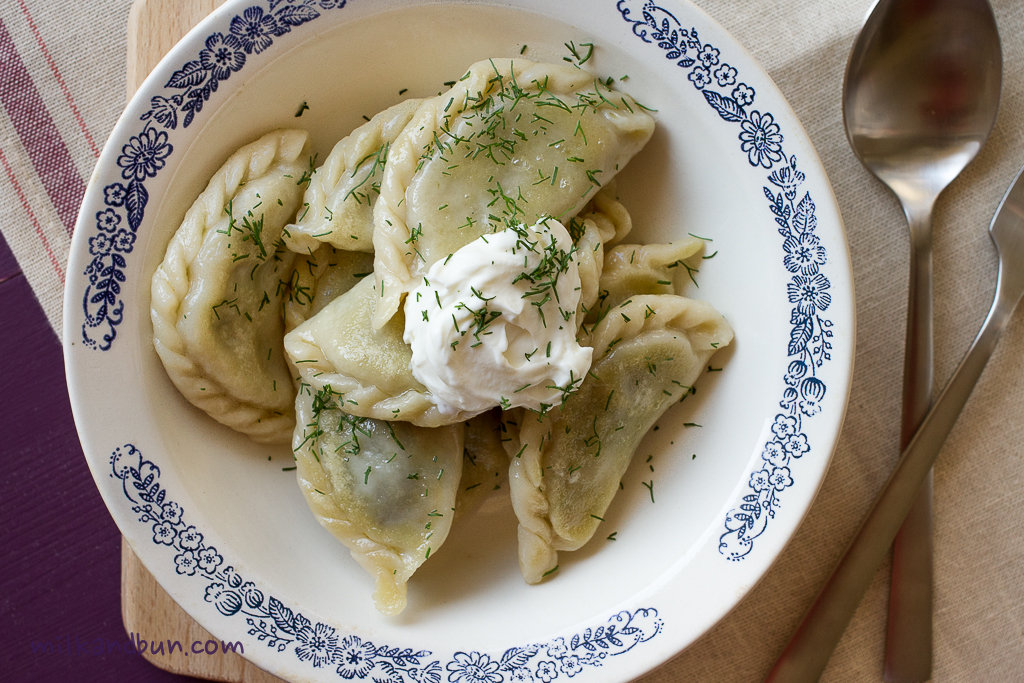
Varenyky, often described as akin to ravioli in appearance, is a culinary gem that unites the palates of both Russians and Ukrainians. These dumplings present themselves as little pockets of joy, concealing a sumptuous filling within their tender doughy embrace.
What sets varenyky apart is the sheer delight of their fillings. A harmonious blend of mashed potatoes, eggs, and cheese comes together to create a rich and comforting core. This combination of ingredients, meticulously prepared, yields a texture and taste that are simply irresistible. The creamy and slightly savoury filling provides a comforting contrast to the soft dough, making each bite a culinary revelation.
What adds a thrilling twist to varenyky is their adaptability. These dumplings aren't limited to savoury expressions alone. They proudly wear a sweet and fruity crown, as they can be garnished with various fruits. Whether it's the natural sweetness of cherries, the tartness of berries, or the zing of apricots, varenyky eagerly welcome these fruity companions. This duality in flavour profiles allows varenyky to dance effortlessly between the realms of sweet and savoury, catering to diverse tastes and preferences.
Varenyky is more than just a dish; it's a shared culinary treasure that bridges cultures and transcends borders. It finds a cherished place on the tables of both Russian and Ukrainian cuisine. This wide acceptance and love for varenyky have led to its widespread availability, often being sold in frozen form in markets.
The enduring popularity of varenyky is a testament to its deliciousness and adaptability. It's a comfort food that resonates with the warmth of home-cooked meals, a taste of tradition, and a bite of culinary excellence.
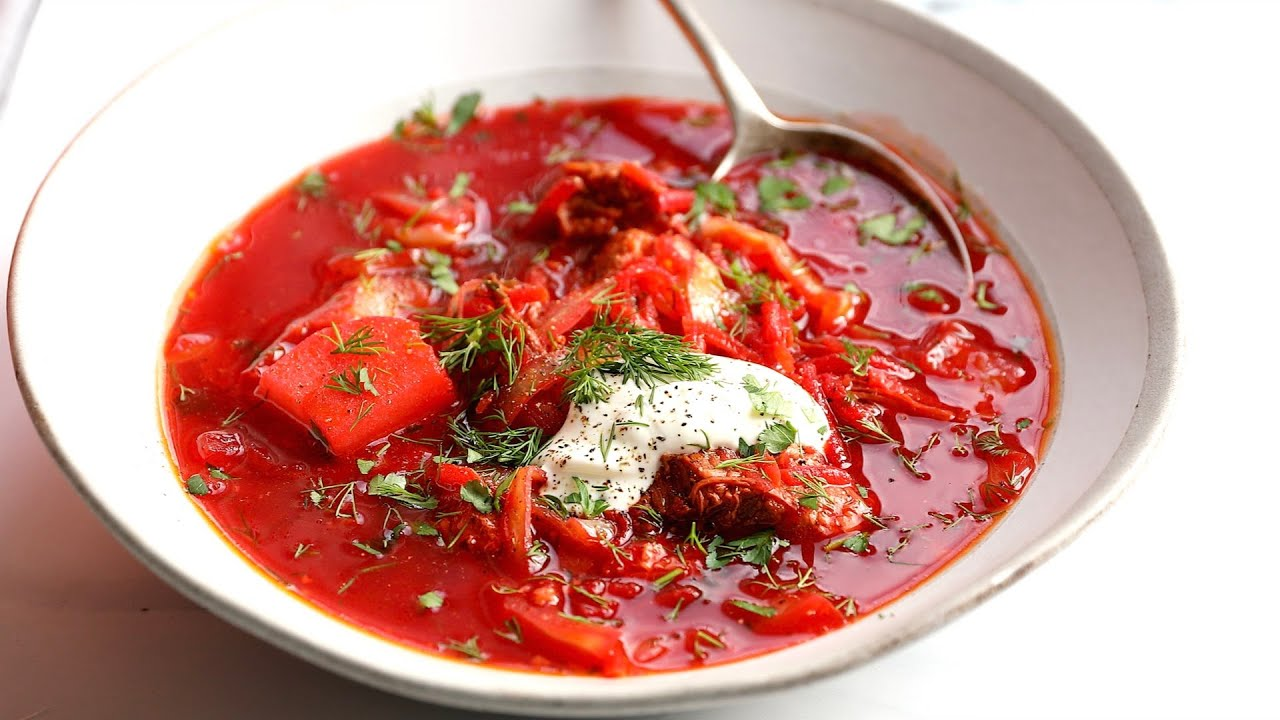
Borscht, a name that resonates with warmth and tradition, stands as a symbol of Russian culinary excellence. Often regarded as the quintessential Russian dish, it holds a special place in the hearts and palates of the nation's people. This iconic Eastern European soup makes a striking impression with its vibrant reddish-purple hue, capturing the essence of both flavour and visual allure.
This soup transcends time, with notable historical figures like Alexander the Second and Catherine the Great savouring its delightful flavours. At its core, borscht features beets as a key ingredient, providing not only its distinctive colour but also a subtle earthy sweetness.
Beyond its visual and historical appeal, borscht is a hearty and nutrient-rich soup that has nourished generations of Russians. Bursting with essential vitamins and minerals, it serves as a comforting and satisfying meal.
Whether enjoyed in its classic meat-based form or as a vegetarian variation, borscht showcases the versatility of Russian cuisine, accommodating various dietary preferences without compromising on taste. The addition of garlic infuses a delightful zest that elevates the overall experience.

Solyanka soup stands as a culinary legacy, bridging the traditions of both Russian and Ukrainian kitchens with its heartwarming embrace. It's more than just a dish; it's a cherished piece of culinary heritage that has transcended generations.
This hearty and flavorful soup symbolises the enduring love for comfort food in these regions, where rich, soul-warming soups have long been a staple at family gatherings and community celebrations.
Solyanka is a delightful ensemble of meats, mushrooms, and fish intermingle to create a depth of taste that is simply unparalleled. The addition of tender potatoes and the tangy burst of olives adds layers of complexity, demonstrating the creativity and resourcefulness inherent in Russian and Ukrainian cuisines. Solyanka has become a symbol of unity, bringing together diverse ingredients and traditions into one exquisite culinary experience.
One remarkable aspect of Solyanka is its association with morning meals. While many cultures opt for light and simple breakfasts, Russians and Ukrainians embrace the robust flavours of Solyanka in the early hours. This morning ritual is a testament to the soup's heartiness and ability to provide a burst of energy and warmth that kick starts the day.

Olivier salad, affectionately known as "Russian salad," is a culinary enigma that has both puzzled and delighted palates for generations. Its origin story, wrapped in the mystery of its creation, adds to its allure. While some credit the French chef Lucien Olivier with its invention in the 19th century, the true genesis of this beloved dish remains veiled in the annals of culinary history.
The resurgence of Olivier salad aligns with the Soviet Union era, where it became an emblematic dish of the time. Often referred to as "Stolichniy salat" or "capital salad," it found its way onto countless Soviet dining tables, becoming an integral part of celebrations and gatherings. The salad's enduring appeal was not only in its flavorful composition but also in its ability to bring people together, transcending the boundaries of geography and generations.
What truly sets Olivier salad apart is the symphony of ingredients that come together to create a harmonious flavour profile. The core components, including potatoes, eggs, carrots, and various meats like ham or bologna, are meticulously diced and artfully combined. This creates a dish that is not only substantial but also satisfying in its diversity of textures and flavours. The inclusion of pickles, peas, and a generous sprinkling of fresh parsley elevates the salad to a culinary masterpiece.
Beyond its culinary excellence, Olivier salad has become a cherished tradition in Russian households. Its presence on the table during holidays, birthday celebrations, and the grandeur of New Year's Eve is more than a mere culinary choice; it's a symbol of festivity and togetherness. As families and friends gather around, the appearance of Olivier salad signifies the commencement of a joyous gathering, where warmth, laughter, and the love of good food intermingle.
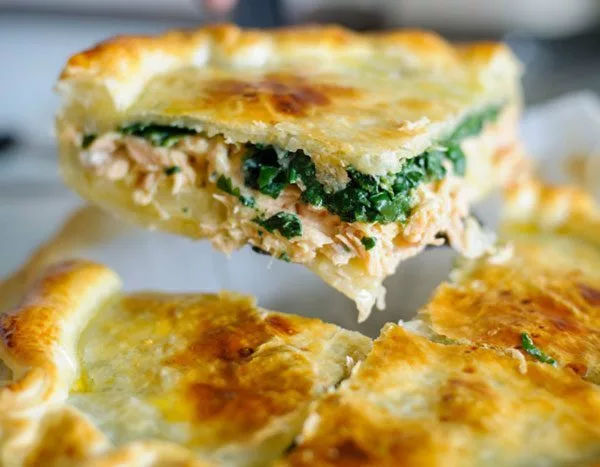
Within the world of Russian cuisine,, a true testament to the artistry of Russian bakers. Its appeal lies not only in its delightful taste but also in its remarkable versatility. At its core, pirog comprises a canvas of various dough types, meticulously crafted with ingredients such as milk and eggs.
This dessert is no ordinary confection; it holds a special place in Russian culinary traditions and often takes centre stage during special occasions and festive holidays. It's a treat that brings generations together, captivating the hearts and taste buds of both young and old. Children, in particular, hold a special affection for pirog, eagerly anticipating its appearance on the dining table, knowing that each bite is a journey into the sweet and comforting heart of Russian cuisine.
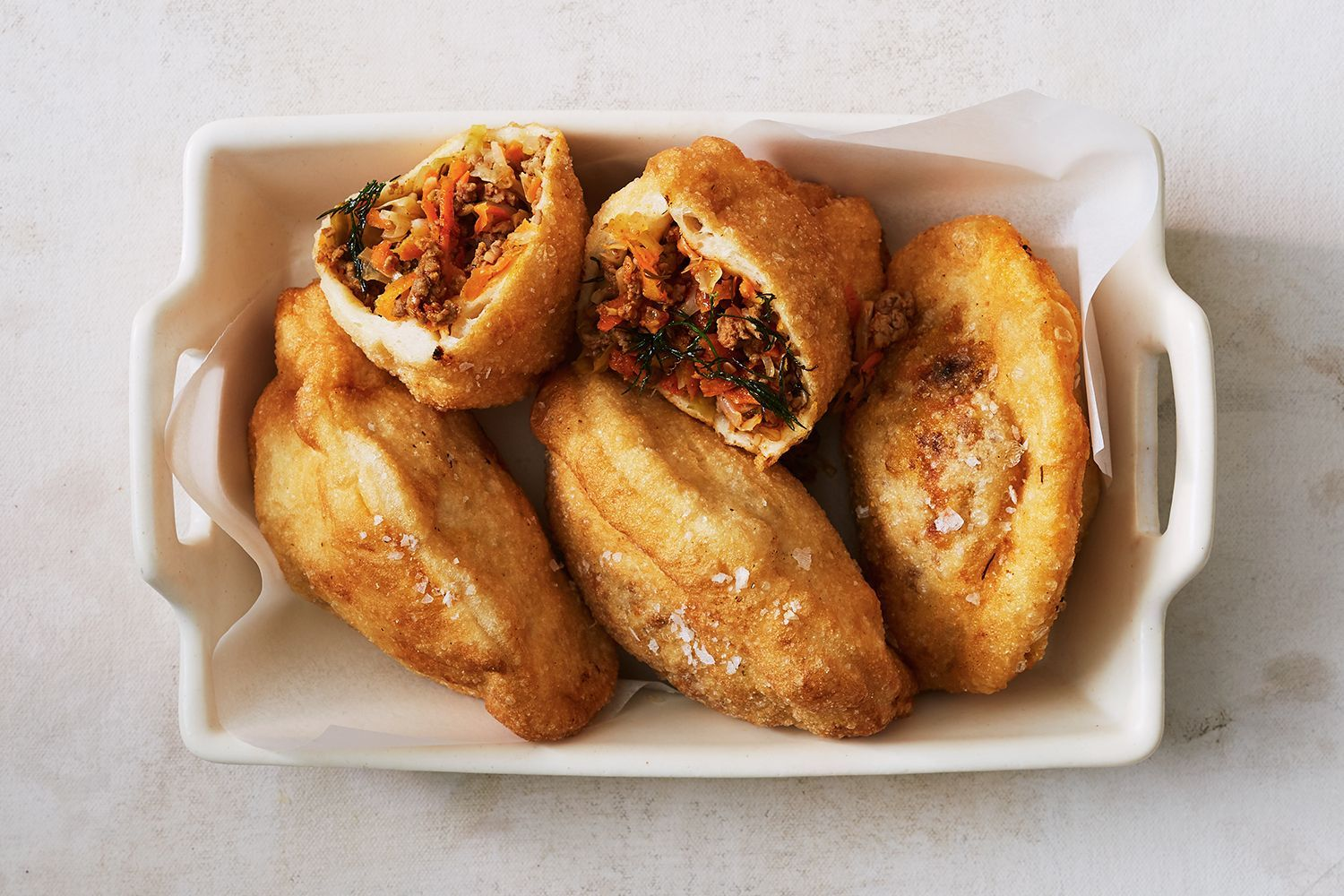
As the smaller and more snack-sized sibling of the larger pirog, pirozhki are a true source of culinary delight in Russia. These bite-sized treasures come in two delightful preparations: fried or baked. What sets pirozhki apart is the vast array of fillings that can be lovingly enclosed within their soft and doughy embrace. The options are a culinary symphony, spanning the spectrum from savoury to sweet. On the savoury side, you'll find ground beef, cabbage, and potatoes, creating hearty and satisfying options.
Meanwhile, the sweet side of pirozhki showcases the tantalising allure of fruits, transforming these pastries into delectable desserts. What makes pirozhki truly special is their convenience and portability, making them the perfect choice for a quick snack on the go or even a satisfying meal option that can be enjoyed anytime, anywhere.
When it comes to the grandeur of Russian cuisine, Beef Stroganoff stands as a crowning jewel of flavour and finesse. This globally acclaimed dish has its origins firmly rooted in Russia, showcasing the country's prowess in culinary artistry. At its heart lies tender beef tenderloin, a testament to the rich agricultural heritage of the land. This premium cut is treated with reverence, cooked to perfection, and becomes the star of the show.
What truly elevates Beef Stroganoff to a masterpiece is the exquisite pairing of ingredients. The beef, already tender and succulent, finds a harmonious dance partner in the form of mushrooms, creating a symphony of umami flavours.
Onions contribute a delicate sweetness, while the crowning glory is the velvety smetana, a Russian sour cream, that transforms the dish into a creamy, savoury delight. This ensemble of ingredients creates a rich and sumptuous flavour profile that leaves a lasting impression on the palate.
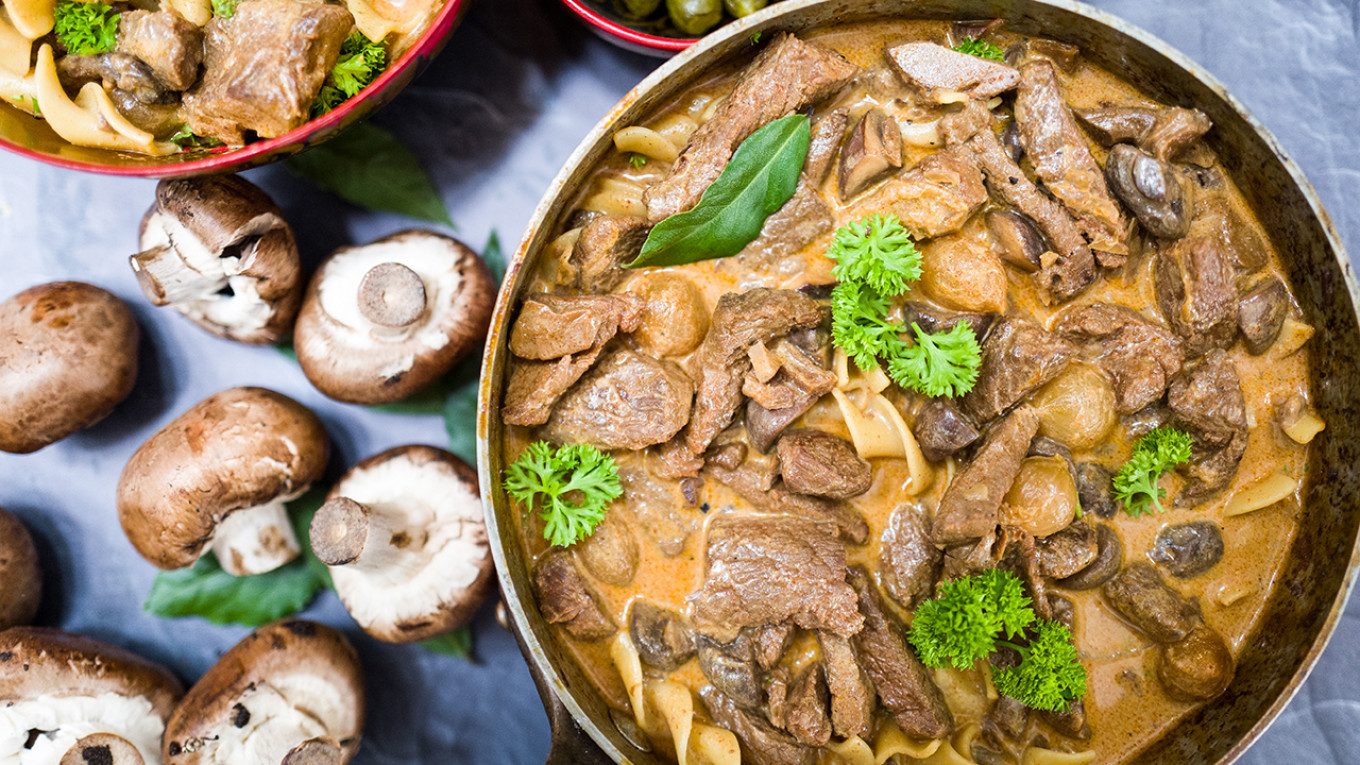
The dish's name, Beef Stroganoff, carries a historical legacy that ties it to the city of Odessa. It's a culinary ode to Count Stroganoff, a prominent figure of his time, who left an indelible mark on Russian history. His connection to this dish adds a layer of intrigue and elegance to an already exquisite creation.
For those embarking on a culinary journey through Russia, tasting Beef Stroganoff is a must. It's a dish that beautifully exemplifies the decadent side of Russian cuisine. Whether enjoyed in a traditional Russian restaurant or lovingly prepared at home, Beef Stroganoff is a culinary masterpiece that showcases the country's rich flavours and culinary traditions, leaving a lasting impression on anyone fortunate enough to savour its sublime taste.
In the tapestry of Russian culinary culture, pickled cucumbers are not just an ordinary dish; they are a cherished tradition with roots that stretch back for centuries. This tangy and flavorful delicacy has earned an esteemed place at Russian dining tables, becoming an integral part of the nation's gastronomic heritage. The practice of pickling cucumbers is more than a culinary technique; it's a testament to the resourcefulness of Russian cuisine.
Vodka's Trusted Companion: One cannot speak of pickled cucumbers in Russia without mentioning the customary practice of enjoying them alongside vodka. This classic pairing is not merely a matter of taste; it's a cultural ritual, a shared experience that transcends generations. The crisp and tangy cucumbers serve as a perfect foil to vodka's bite, creating a delightful contrast that enhances the overall drinking experience. The combination of cool, briny cucumbers and the warmth of vodka is a harmonious union that has stood the test of time.
Potatoes and Beyond: Beyond the vodka tradition, pickled cucumbers find another popular companion in the form of potatoes. The marriage of these two ingredients creates a delightful symphony of textures and tastes. The mild, starchy goodness of potatoes complements the zesty tang of pickled cucumbers, resulting in a harmonious balance that pleases the palate. This combination is a testament to the versatility of pickled cucumbers, as they effortlessly pair with a wide array of accompaniments.

Within the realm of gastronomy, caviar reigns supreme as a symbol of opulence and indulgence. Russia's reputation in caviar production is unparalleled, and it's a realm where the pinnacle of luxury meets the finest of flavours. Beluga caviar, often hailed as the jewel in the crown of caviar, emerges from the Caspian Sea as a rare and exquisite delicacy. It's renowned as the most expensive caviar in the world, a coveted treat reserved for those with the most discerning palates and a penchant for the finest things in life.
The allure of beluga caviar lies not only in its exclusivity but also in its remarkable taste. Each delicate pearl of caviar bursts with a unique blend of flavours that dance on the tongue - creamy, nutty, and subtly briny. The experience of indulging in beluga caviar is a journey into the heart of luxury, a taste of the extraordinary. While this culinary gem may be found in 'select' specialty stores, its rarity only enhances its desirability.
For those seeking a more accessible yet still exquisite caviar experience, red caviar is the answer. It's a variety that can be readily found in local grocery stores and restaurants, allowing a broader audience to savour the essence of Russian culinary extravagance. Red caviar offers its own unique appeal, with a vibrant colour and a slightly less intense flavour profile than its beluga counterpart.
To fully appreciate the essence of Russian caviar, consider pairing it with fluffy Russian pancakes. This combination epitomises gourmet delight, merging the delicate, briny bursts of caviar with the comforting, pillowy texture of pancakes. It's a symphony of flavours and textures that showcases the versatility of caviar, allowing it to shine as both a standalone indulgence and a delightful accompaniment.
What is the national dish of Russia?
Borscht is often considered the national dish of Russia due to its widespread popularity and cultural significance.
Are there vegetarian options in Russian cuisine?
Yes, Russian cuisine offers vegetarian options such as Varenyky (dumplings filled with mashed potatoes and cheese) and vegetable-based soups. You can also find vegetarian versions of dishes like Pelmeni and Solyanka.
Where can I try traditional Russian foods in Russia?
You can sample traditional Russian foods at local restaurants, cafes, and street food vendors throughout Russia. Additionally, exploring local markets and attending traditional festivals can provide opportunities to taste authentic Russian cuisine.
What is the best time to try Olivier Salad in Russia?
Olivier Salad, also known as Russian Salad, is popular year-round in Russia. However, it is particularly associated with holiday celebrations, including New Year's Eve, when it's a common feature on festive tables.
How can I enjoy caviar in Russia?
You can savour caviar in Russia by ordering it in restaurants, purchasing it from specialty stores, or even trying it at upscale hotels. For a classic Russian experience, pair caviar with Russian blinis (pancakes) and sour cream.
Are there regional variations of these dishes in Russia?
Yes, there are regional variations of many Russian dishes. For instance, borscht may have different ingredients in various regions, and pelmeni fillings can vary. Exploring these regional variations can be a culinary adventure in Russia.
Step1: Complete the online application by providing your passport details.
Step2: Submit payment online using a credit card.
Step3: Monitor your email for confirmation of payment and receipt of your eVisa, which will be sent electronically.